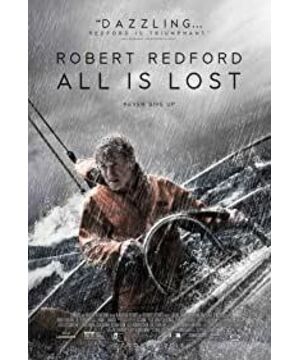1. People with no personality
have no description of the protagonist’s personality and past except for the wedding ring. There are no inner lines or narrations (except for the obscure part at the beginning of the movie), that is, the protagonist is anonymous, he is a person who represents humanity and'life', not a character with emotional resonance.
If it is necessary to generalize its personality, the "personality" of the character is portrayed in the behaviors performed after waking up: proficient and silent. The individuality here is a micro-specific methodology, and has nothing to do with the soul, so in general, this is a person without individuality.
2. A person without a goal The
protagonist has no goal, or hope from the outside world, no family members to miss, and no distress signal to guide him (after the ship sinks, he seems to have a goal, but not strong), no hope That is to say, there is no direction, the film is not intended to make the audience anxious due to the rescue plot from the outside (there is no external world in the film), nor does it intend to allow the audience to enter the character's heart through behavior to generate sympathy/sympathy. The audience's feelings are all based on In terms of the survival instinct of the protagonist who arouses our sympathy, we see him as a representative of our human beings (anonymity allows him to be any person) fighting against nature, and the commonality as a human being is
the only source of the film’s emotions aroused by the audience . Look, it can be said that the film has depth.
3. The change (or unique perspective) when the
mast breaks due to wind and waves, the protagonist did not hear it but we heard it. This is a departure from the previously shaped audience—the protagonist’s unified subjective perspective, but it also confirms the wonder of the audience in this. The position is neither an omniscient sympathizer nor a worried fellow passenger. The audience enters the relationship circle of'audience-protagonist-nature', which makes the audience enter a unique observer position, and is also buried for the subsequent changes in the film. Foreshadowing.
4. Shipwreck (or enter survival record)
When the ship sinks, there are obvious long shots and music that arouses the emotions of the audience. Here, the love for the ship shows that the protagonist becomes a survivor who succumbs to nature. Before that, he was a challenge to shave safely in the storm. For the protagonist, nature is “to be able to fight with”. The sinking of the ship is the most obvious metaphor that humans cannot do with nature-we can only survive in front of nature, and all conquests and sitting on an equal footing are illusions.
Of course, it cannot be ruled out that this is the author's commemoration of the passing of the most expensive props in the film. In the ending subtitles, I saw him write a thank you note about the Arizona.
After that, although freshwater, maps, and fishing have been taken quite freely, since the protagonist has become a survivor, the details of survival and the direction of the map will inevitably occupy the attention of the audience. It is worth mentioning that the two cruise ship passing scenes can be said. It is a dramatic manifestation of the hope of survival, but who can say that it is not the insignificance between humans and humans in front of nature. In the end, the protagonist chooses to drown himself, which is quite helpless, but in the sense of the dramatic atmosphere, it can be seen that the director is In order to make the audience happier, the old man can still swim back after drinking the sea water for 40 seconds.
View more about All Is Lost reviews








